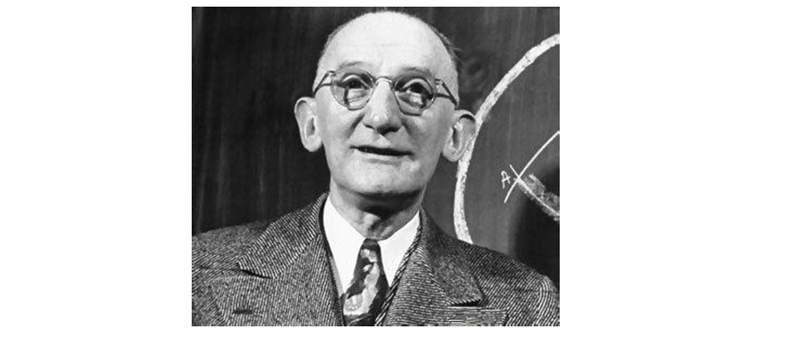Biography of Louis Leon Thurstone (1887-1955)

- 4697
- 1550
- Jeffery Jones
Louis Leon Thurstone (1887-1955) was a American mechanical engineer and psychologist known for being the most famous psychometrist of his time. Worked intensely in the study of the Psychometry, psychophysics and the creation of tests for the measurement of human intelligence With quantitative methods.
Leon Thurstone Biography
Louis Leon Thurstone, whose original name was Thünström, was born on May 29, 1887 in Chicago, Illinois, of Swedish immigrant parents. He attended school in several places in the United States, as well as in Stockholm.
At first he studied Mechanical Engineering at Cornell University, where the title was taken in engineer. As a curiosity, Thurstone designed a film projector (the photograph was always his hobby) that he then built in the Thomas Edison laboratory, with whom Thurstone briefly worked as an assistant.
In 1914, he worked for two years as a professor of geometry and writing at the University of Minnesota, which stimulated his interest in the learning process and human skills. He enrolled as a psychology student at the University of Chicago and studied Doctorate in Psychology In 1917.
After a brief but productive period at the Carnegie Institute of Technology, he returned in 1924 to the University of Chicago to found his first psychometric laboratory. Subsequently in 1952 he continued his work at the University of North Carolina, where he established what is now the Psychometric laboratory l. L. Thurstone.
The multifactorial theory of intelligence
Leon Thurstone He made significant contributions in many areas of psychology, including psychometry, statistics and the study of human intelligence. Developed statistical methods to perform psychological measures, evaluate mental attitudes and abilities, among many other contributions. It is known for the development of new analytical factors of factors to determine the number and nature of latent constructions within a set of variables observed.
The new statistical techniques developed by Thurstone provided the necessary tools for the psychometic study of psychology. In Theory of Primary Mental Abilities, It offers a human intelligence model that challenged Charles Spearman's dominant paradigm of a unitary conception of intelligence.
Thurstone argued that the G Factor G (General Intelligence) was a statistical construct resulting from the mathematical procedures used to study intelligence. Using its new approach to the analysis of factors, Thurstone said that intelligent behavior does not arise from a single general factor, but that it arises from seven independent factors that he called primary skills.
This is how, applying the factor analysis of the scores obtained in the intelligence tests, Thurstone (1938) identified these seven relatively different factors or primary skills:
- Verbal fluency (Ability to remember words quickly)
- Verbal understanding (Ability to define words)
- Spatial aptitude (ability to recognize a figure whose position in space had changed)
- Perceptive speed (Ability to detect similarities and differences between different drawings)
- Inductive reasoning (logical thinking)
- Numerical aptitude
- Memory
In addition, when Thurstone analyzed the mental test data composed of people with similar general intelligence quotient scores, he discovered that all of them had different profiles of primary mental skills, further supporting their model of the seven factors and suggesting that their work I had more clinical utility than Spearman's unitary theory.
However, when Thurstone administered his evidence to an intellectually heterogeneous group of children, he could not demonstrate that the seven primary skills were really separated but rather found evidence of the G Factor. But Thurstone established an elegant mathematical solution that resolved these apparently contradictory results, and the final version of his theory was a commitment that explained the presence of a general factor and the seven specific skills. This commitment helped to lay the foundations for future researchers who proposed hierarchical theories and multiple intelligences.
The most notable work of Thurstone was in the areas of attitudes measurement and analysis of multiple factors, and their contributions helped to understand the individual differences observed in the performance of general intelligence tests, which allowed the construction and improvement of the test of tests of intelligence, personality and interest, among other psychological aspects.
Thurstone died in Chapel Hill, North Carolina, on September 29, 1955.
Thurstone's main books and monographs
- The Nature of Intelligence (1924)
- The Fundamentals of Statistics (1925)
- The Measurement of Attitude (1929, Coouthored with e. J. Chave)
- The Reliability and Validity of Tests (1931)
- The Vectors of Mind (1935)
- Primary Mental Abilities (1938)
- Factorial Studies of Intelligence (1941, Coouthored with His Wife, Thelma Gwinn Thurstone)
- A Factorial Study of Perception (1944), and Multiple-Factor Analysis (1947)

